One way to determine academic preparation is by examining the math and science coursework taken in high school that can help students develop the necessary skills to succeed in an engineering degree. The gender gap in earned high school math and science credits closed in 2009. Girls now earn approximately the same amount of course credits as boys.
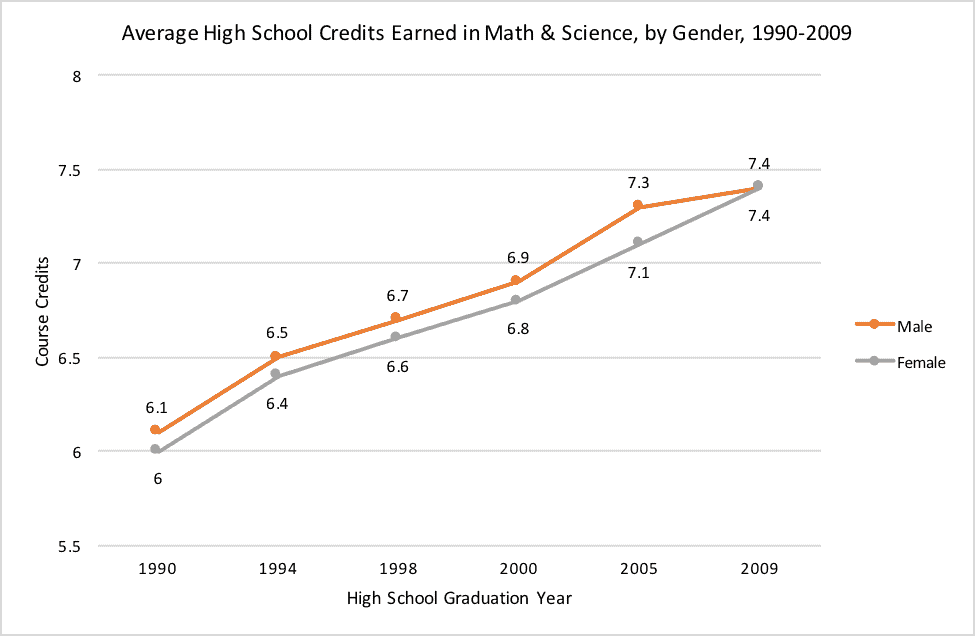
National Assessment of Educational Progress
The National Assessment of Educational Progress (NAEP) results can serve as another measurement for understanding high school preparation. The NAEP is a U.S. measurement representing elementary and secondary students’ academic achievement in various subjects. The Technology and Engineering Literacy (TEL) assessment measures students’ abilities to apply technology and engineering skills in real-life situations. On average, eighth-grade girls scored slightly higher than their male counterparts on the 2014 and 2018 NAEP TEL assessments and increased their average TEL scores significantly from 2014 to 2018.
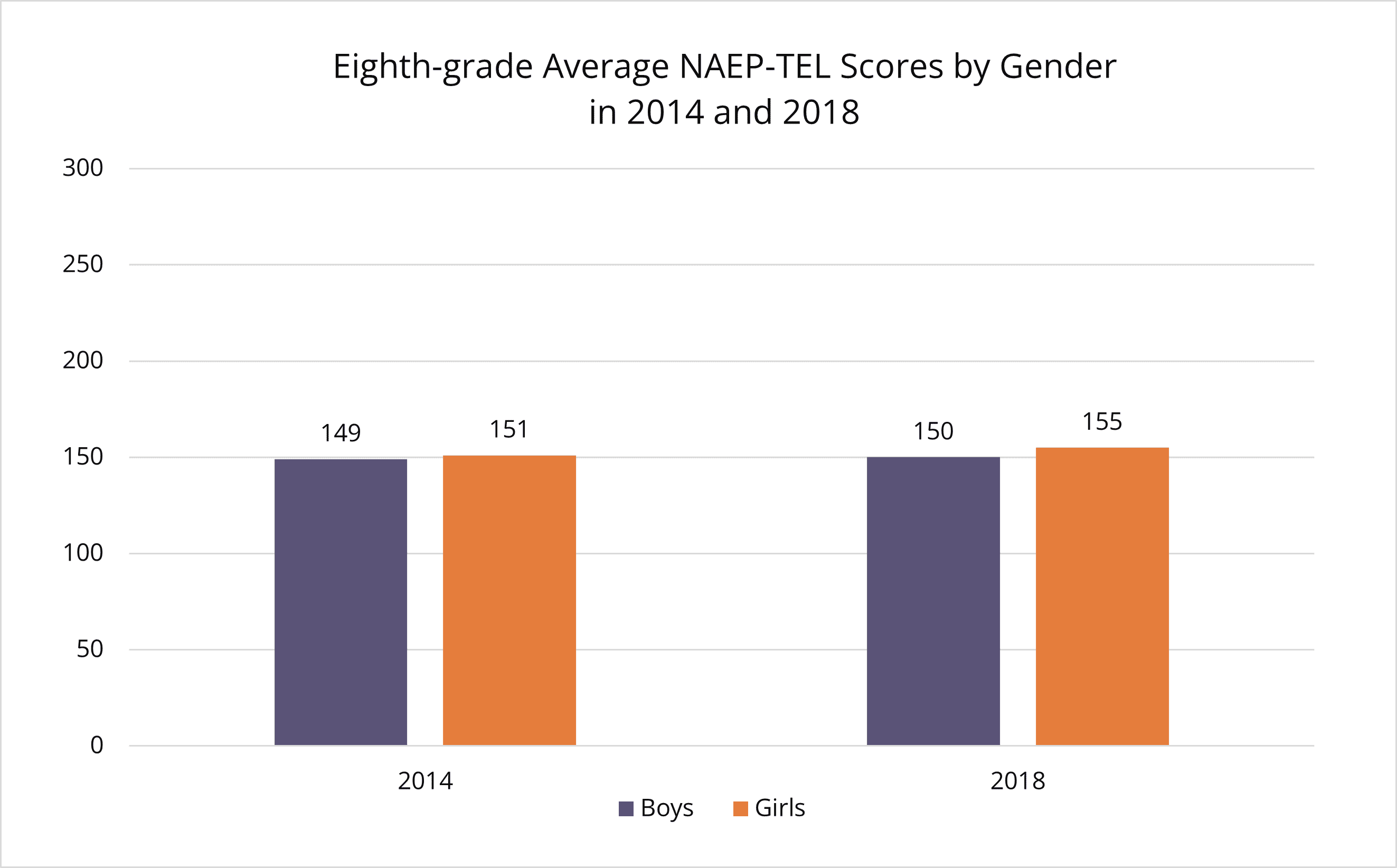
In comparing racial/ethnic category and gender, eighth-grade girls scored higher or similar than their male counterparts on the NAEP-TEL assessment in 2018. However, American Indian/Alaska Native, Black, and Hispanic girls scored lower than their Asian/Pacific Islander and White counterparts.
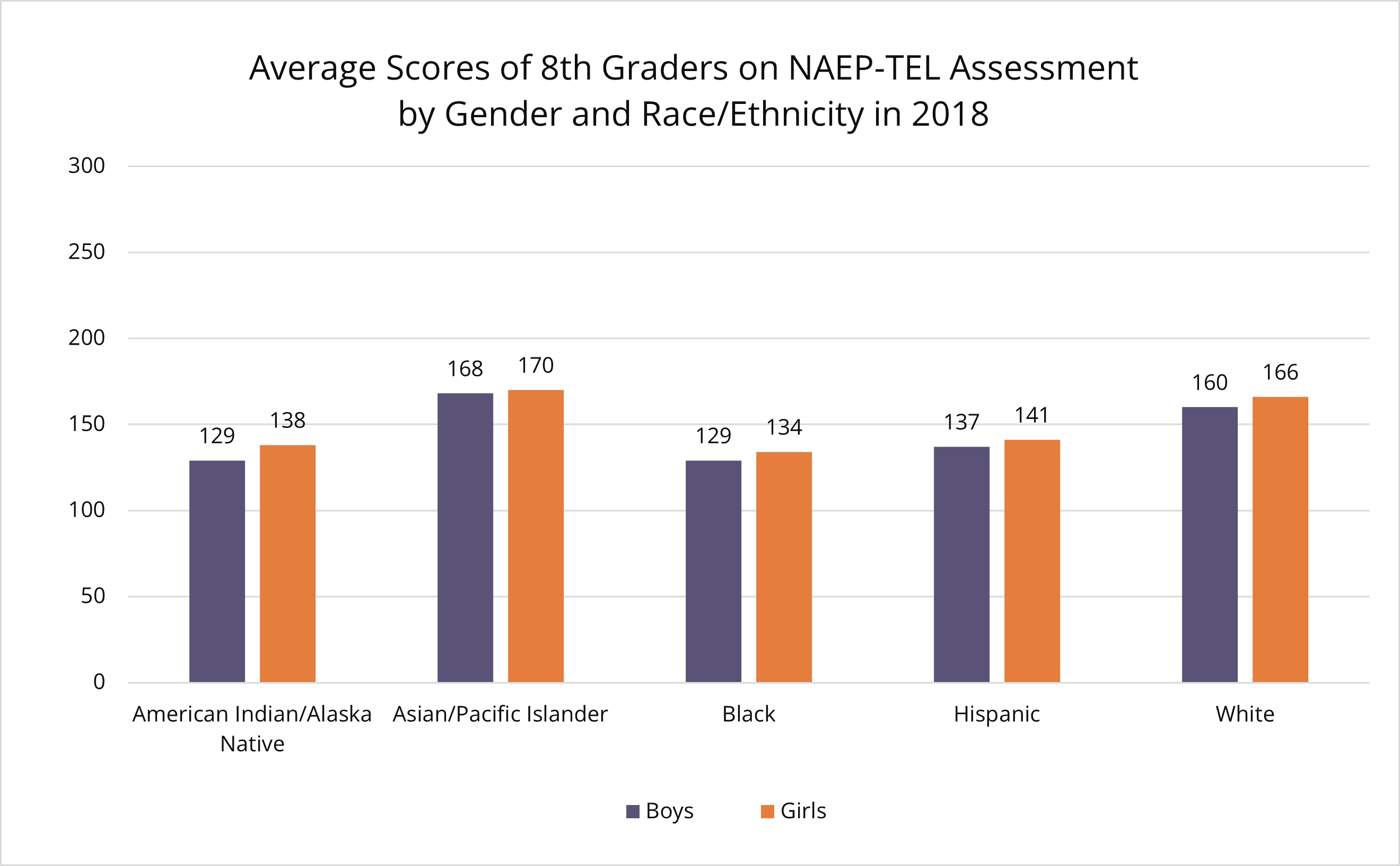
The 2018 NAEP-TEL responses also showed a lower percentage of girls (21%) than boys (30%) in eighth grade had taken or were going to take an engineering class.
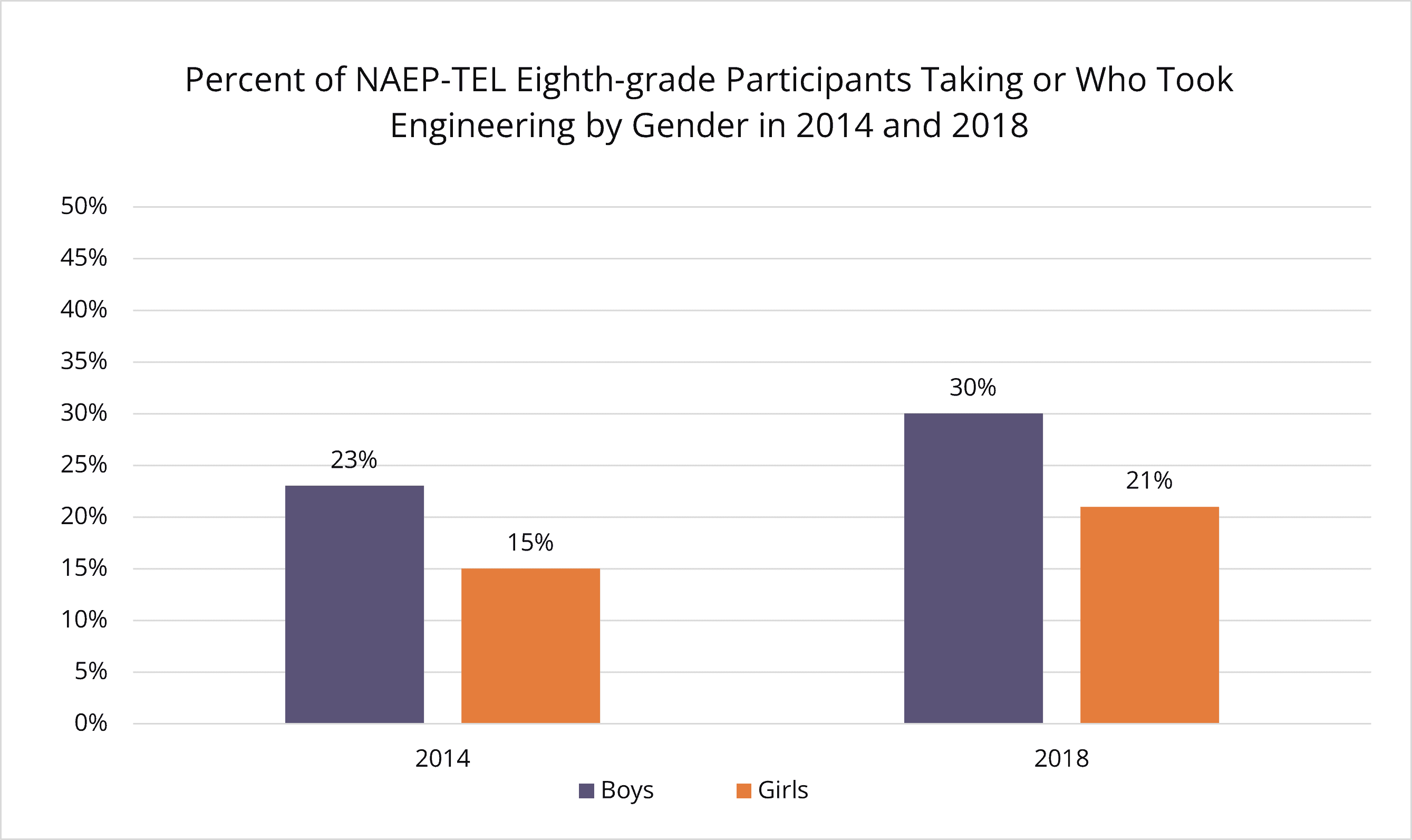
In 2014 and 2018, the NAEP survey found that most eighth-grade students believed they could do technology and engineering-related activities. Boys’ responses slightly decreased from 2014 to 2018, with 52% of boys stating they could do technology and engineering-related activities. Meanwhile, the percentage of girls who believed they could do technology and engineering-related activities increased from 48% to 54%. However, there was also a slight increase in the percentage of girls who stated that they could not do technology and engineering-related activities, from 2% to 4%.
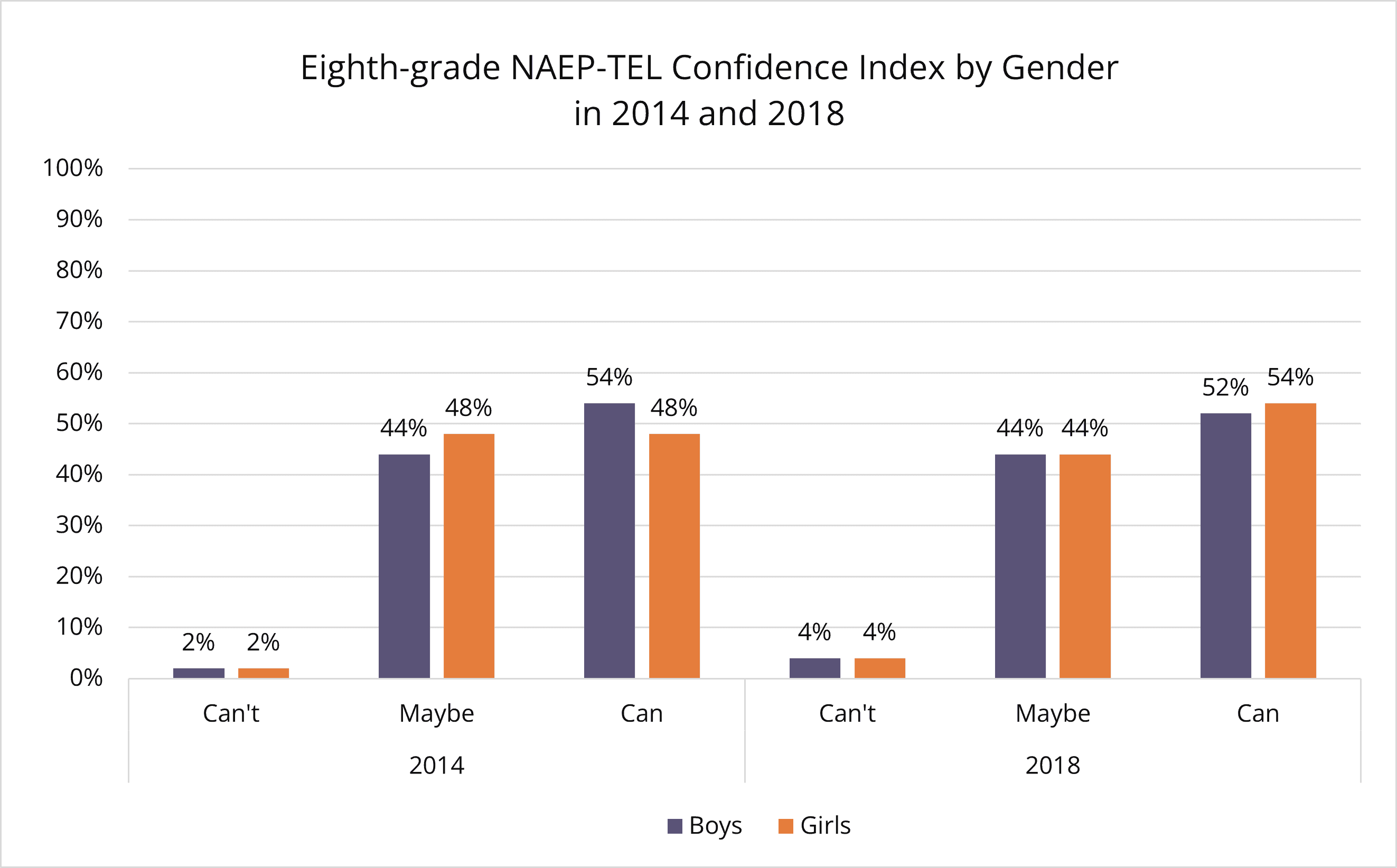
The NAEP mathematics assessment serves as a metric for evaluating students’ proficiency in mathematics and their capacity to utilize that knowledge in problem-solving contexts. The outcomes of this assessment offer a comprehensive examination of students’ mathematical skills and performance trends across different periods. Specifically, in 2019, boys and girls displayed comparable average NAEP mathematics scores across all three grade levels, namely 4th, 8th, and 12th.
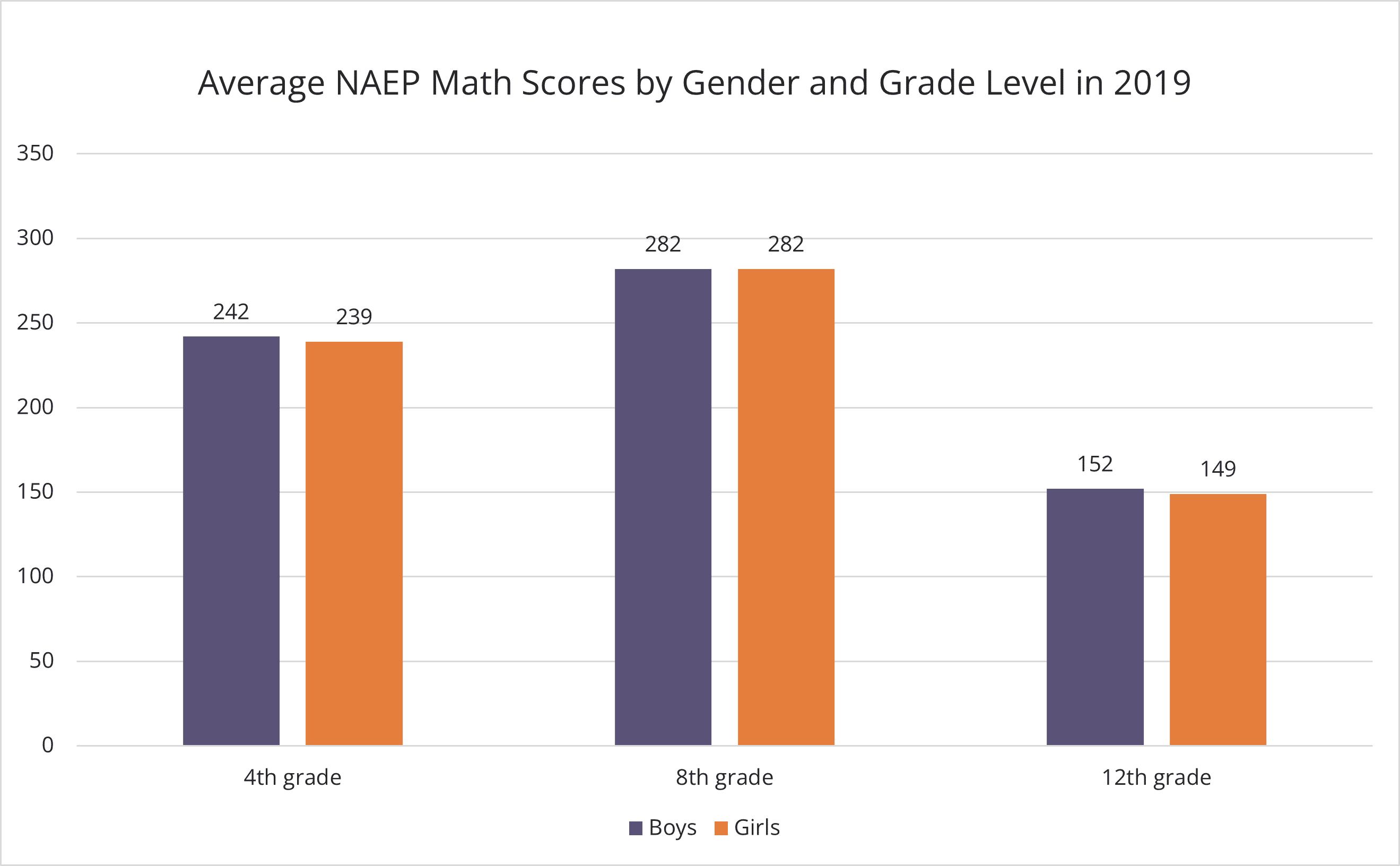
In 2022, a significant decline was observed in the average scores of fourth-grade students, with a decrease of 5 points, and in the average scores of eighth-grade students, with a decrease of 8 points in mathematics. This decline represents a substantial drop in the NAEP math assessments since 1990. While boys’ and girls’ scores decreased, girls had the most substantial decline. Specifically, when examining fourth-grade students, girls demonstrated a decrease of 6 points in their scores between 2019 and 2022, while boys’ scores exhibited a comparatively smaller decline of only 3 points. Similarly, in the eighth grade, girls’ scores decreased by 9 points, whereas boys’ scores experienced a decline of 7 points.
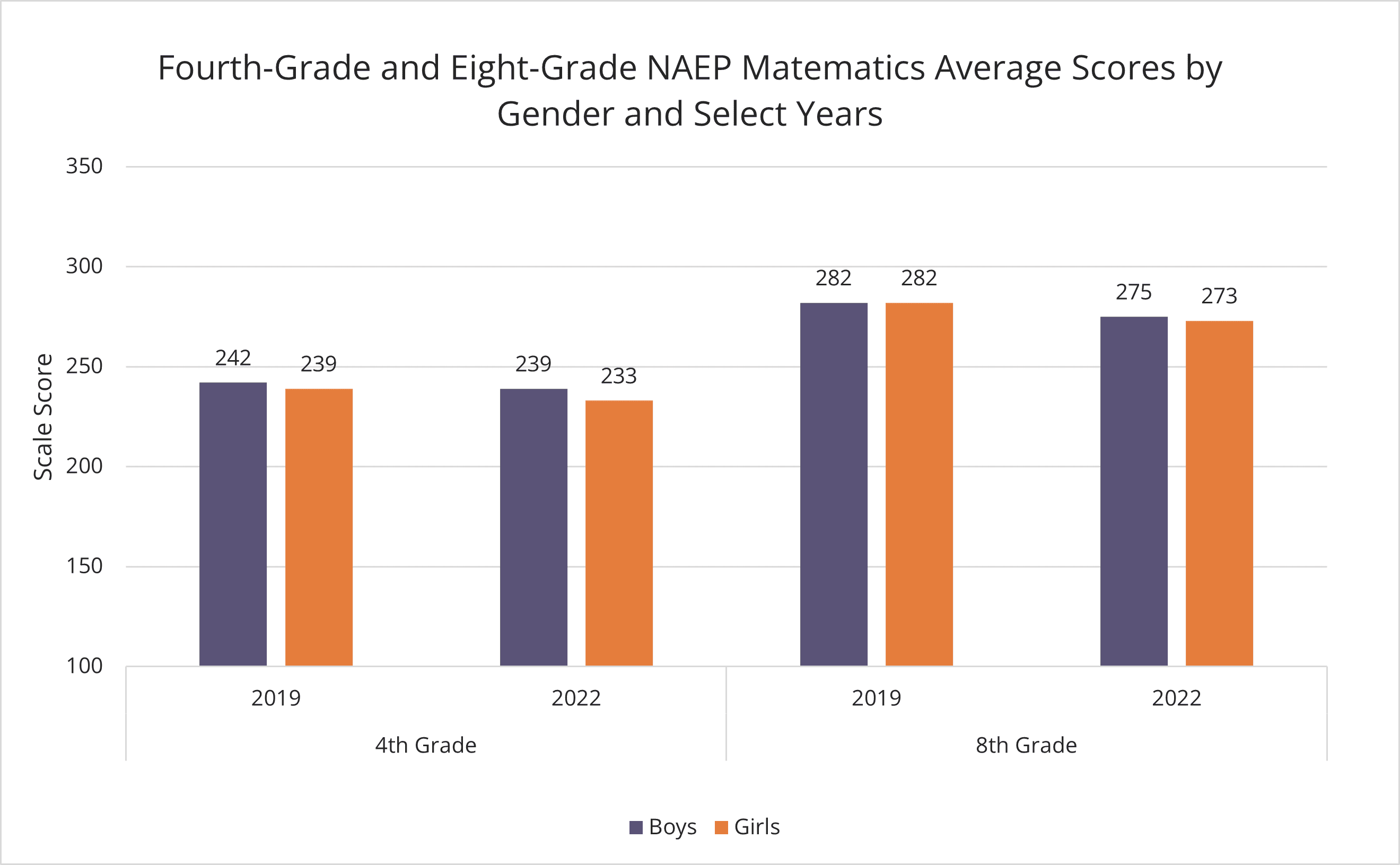
Over selected years between 2005 and 2019, the proportion of boys who scored at or above proficiency level in the NAEP mathematics assessment was slightly above the proportion of girls who achieved the same feat.
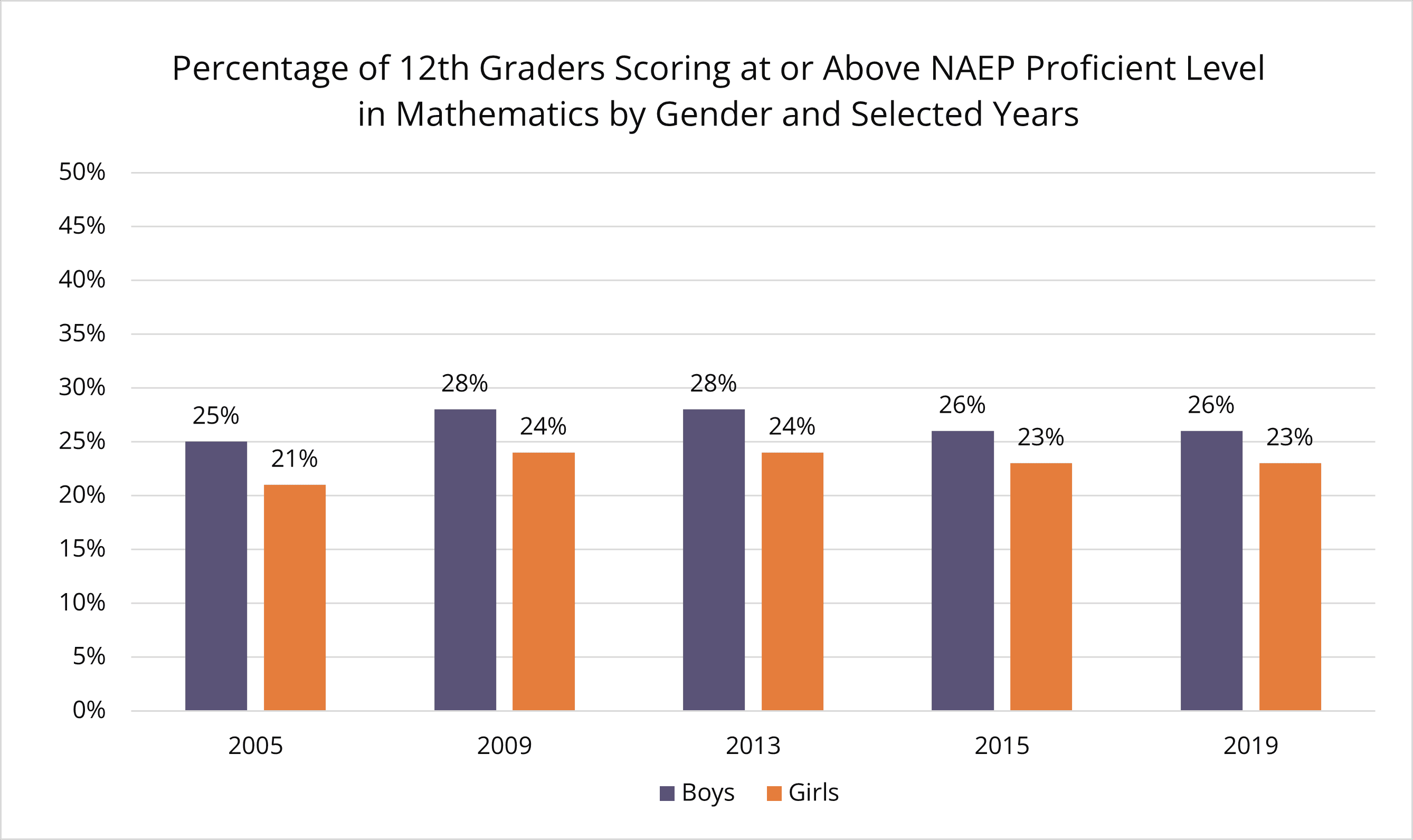
In 2022, the percentage of fourth-grade and eighth-grade students who scored at or above the NAEP Proficient level in mathematics was lower than in 2019. The most significant decline in scores occurred among girls in both grade levels. In 2019, 39% of fourth-grade girls scored at the Proficient or Advanced level, but this percentage dropped to 32% in 2022. Similarly, among eighth-grade girls, the percentage of those scoring at or above proficient levels decreased from 33% in 2019 to 25% in 2022.
Another concerning trend is the increase in girls scoring below the NAEP Basic level. In fourth grade, the percentage rose from 20% in 2019 to 27% in 2022; in eighth grade, it increased from 30% to 39%.
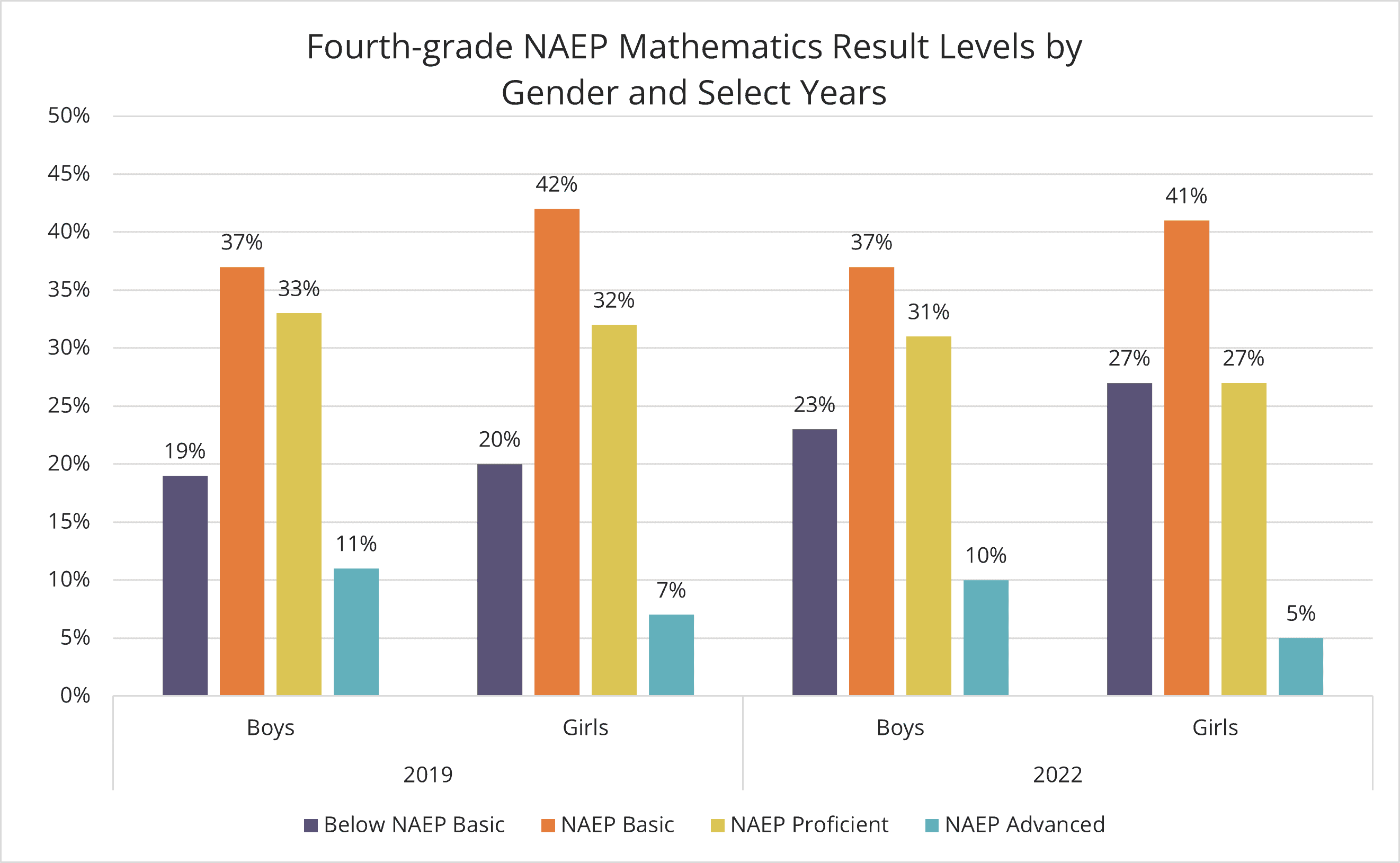
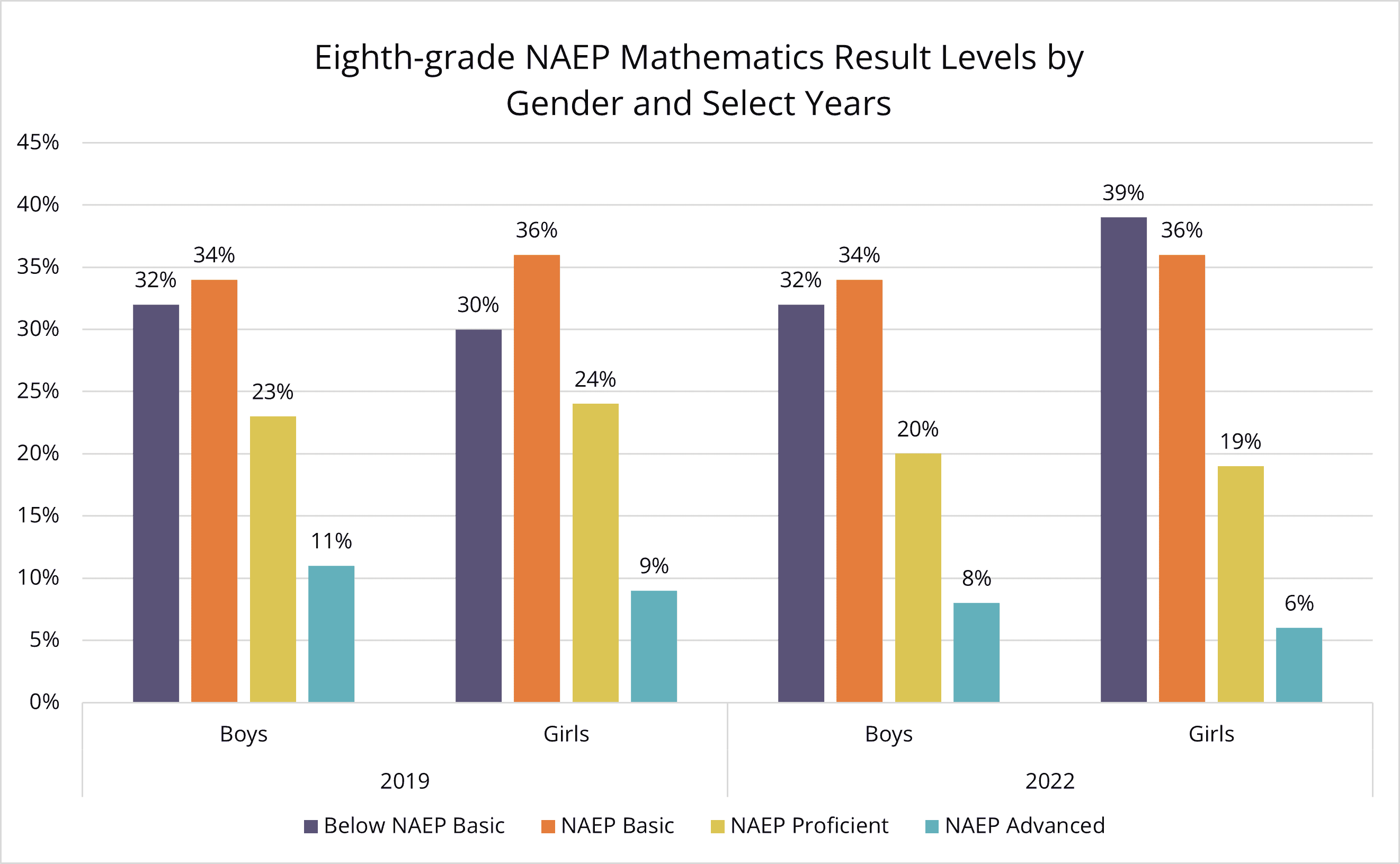
Most notably, the mathematics achievement gap between boys and girls also widened between the two years. For example, the difference in the percentage of fourth-grade boys and girls scoring at the proficient level was 1% in 2019. However, this gap grew to 4% in 2022, indicating that more boys performed at the proficient level than girls. These findings highlight a concerning trend in mathematics students’ performance, particularly among girls at both grade levels.
When examining the NAEP science scores, boys scored slightly higher than girls in the 8th and 12th grades in 2015 and 2019. Girls’ average NAEP science scores in fourth grade decreased from 2015 to 2019 and remained similar in the 8th and 12th grades.
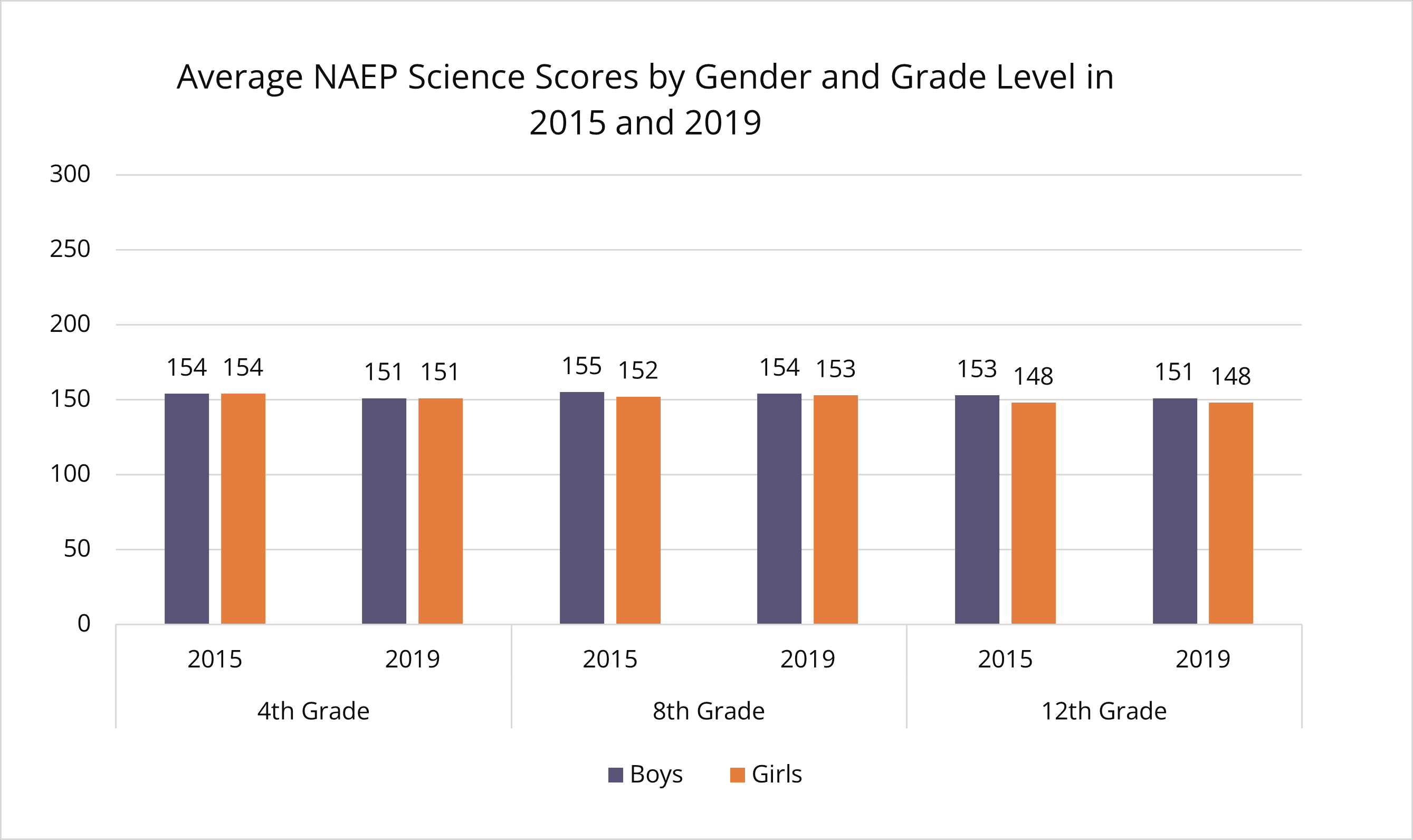
Globally, girls slightly outperformed boys in the Trends in International Mathematics and Science Study (TIMSS) assessment. In contrast, boys slightly outperformed girls in the Program for International Student Assessment (PISA).
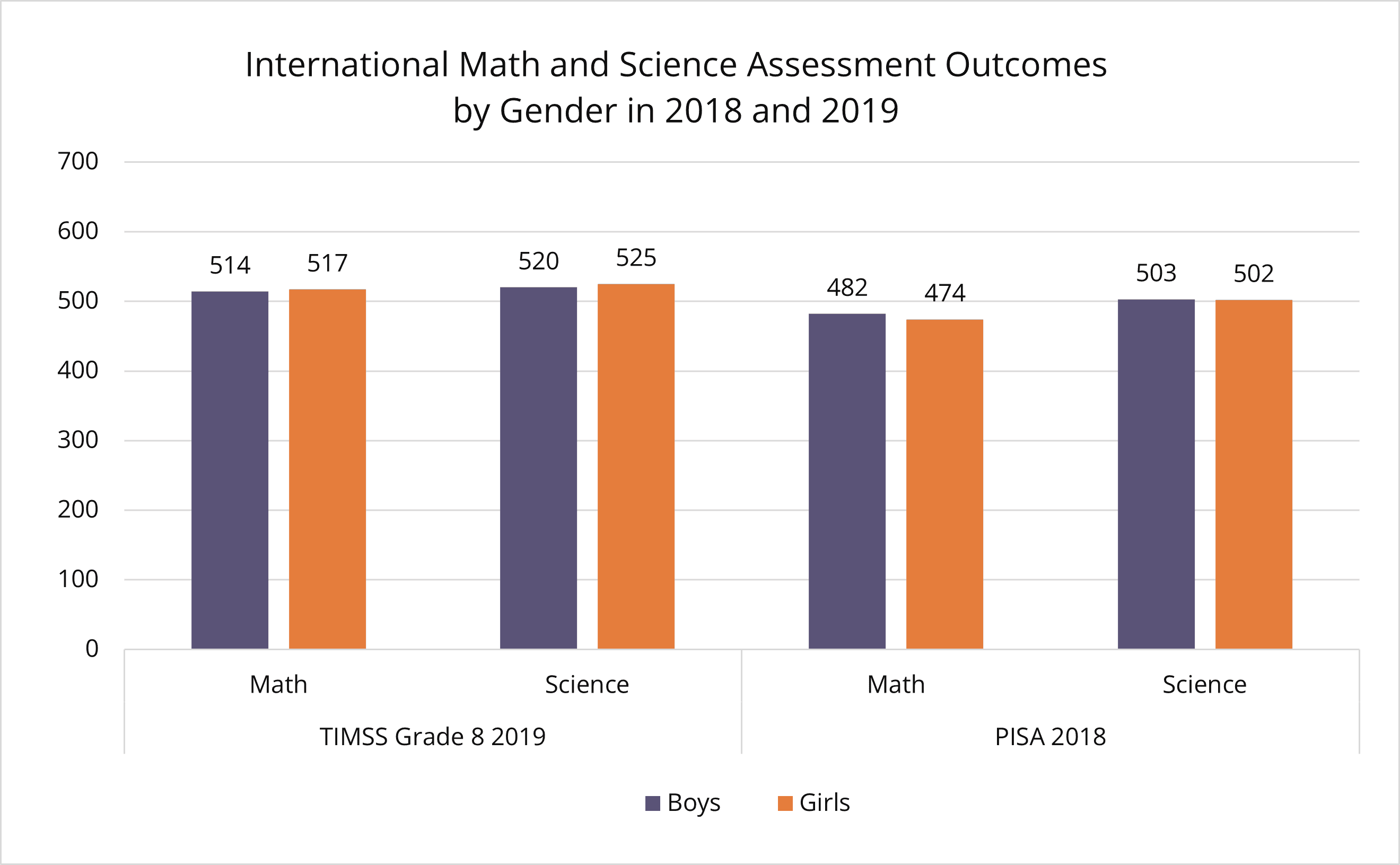
Finally, while a higher proportion of U.S. girls (49.1%) than boys (30.7%) who took the 2018 PISA assessment expressed an interest in having a science-related career by 30, almost three times as many boys indicated they expected to have a science and engineering profession compared to girls. Most girls expressed that they expected to work in a health profession. PISA results also show a similar gendered pattern among top performers or students who achieved a high level on either math or science assessments.
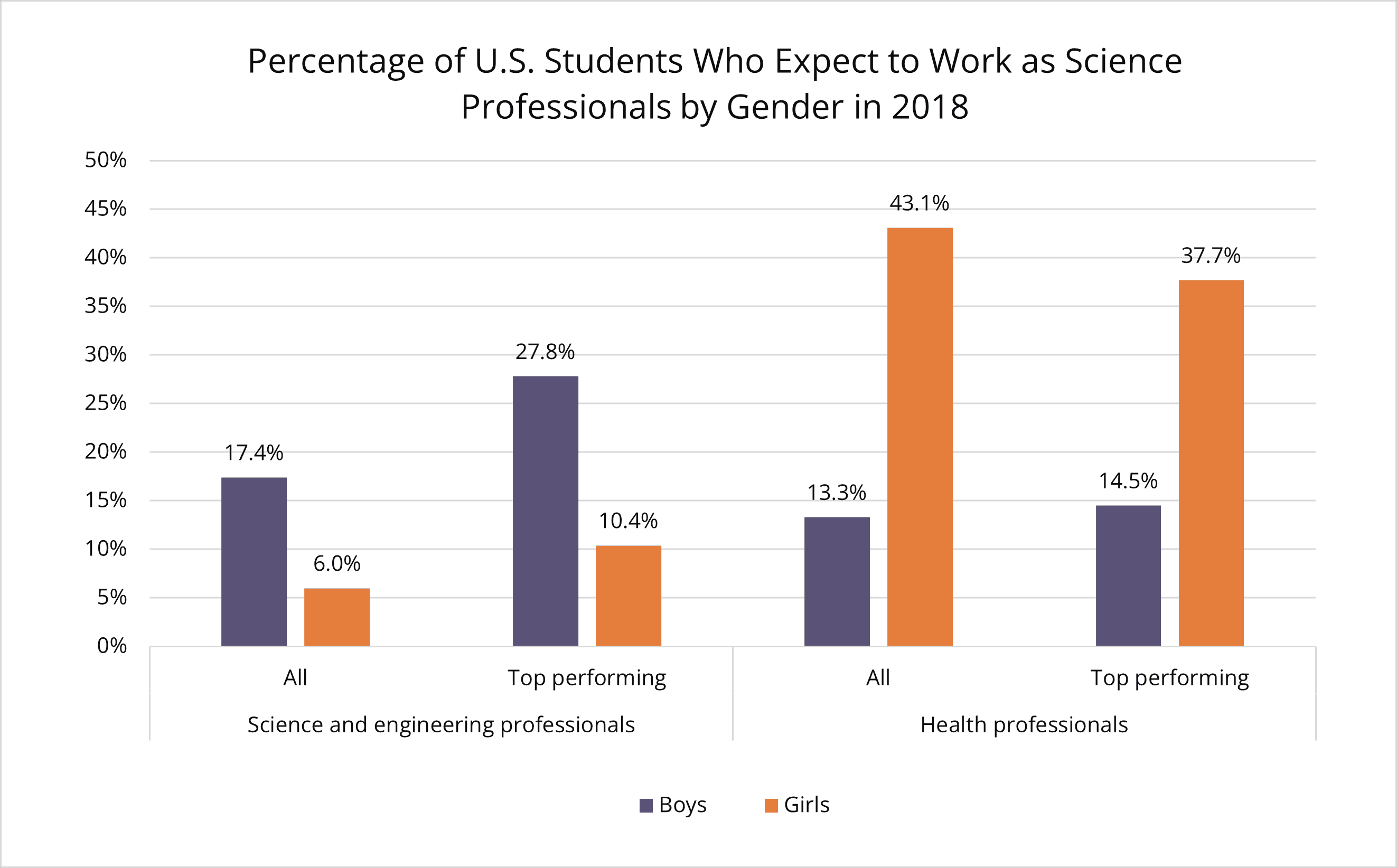
Additional Resources
- McFarland et al. (2019). The Condition of Education 2019 (NCES 2019-144). U.S. Department of Education. Washington, DC: National Center for Education Statistics. Retrieved from https://nces.ed.gov/pubsearch/pubsinfo.asp?pubid=2019144.
- National Science Board. 2018. Science and Engineering Indicators 2018. NSB-2018-1. Alexandria, VA: National Science Foundation. Available at https://www.nsf.gov/statistics/indicators/.
- The College Board. 2022. 2022 Program Summary Report.
- U.S. Department of Education, Institute of Education Sciences, National Center for Education Statistics, National Assessment of Educational Progress (NAEP), 2014 and 2018 Technology and Engineering Literacy Assessments. Retrieved from: https://www.nationsreportcard.gov/tel/results/gaps/